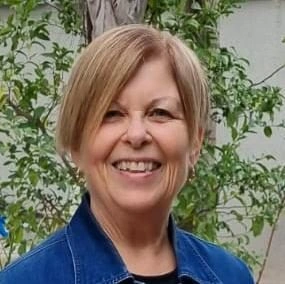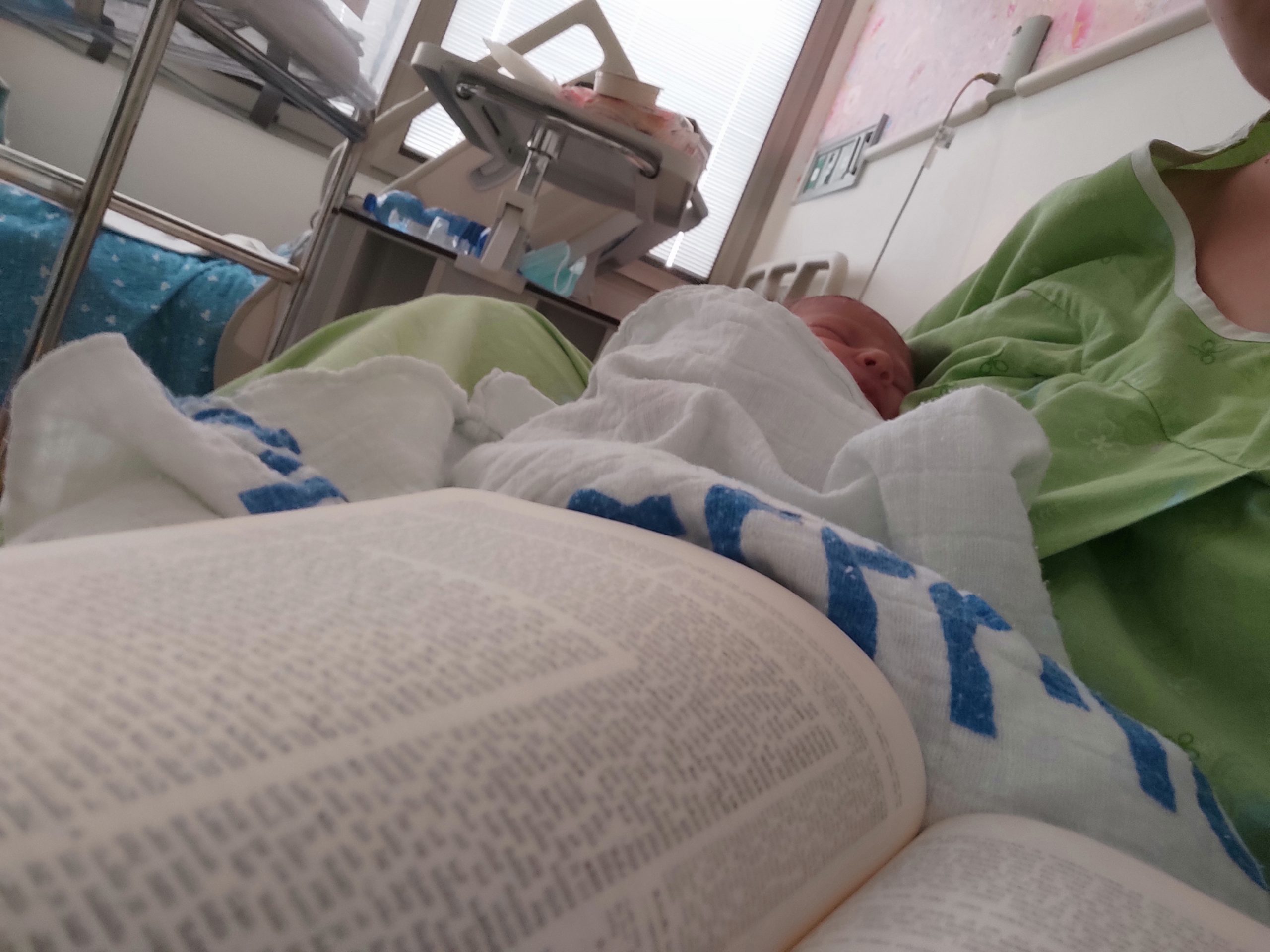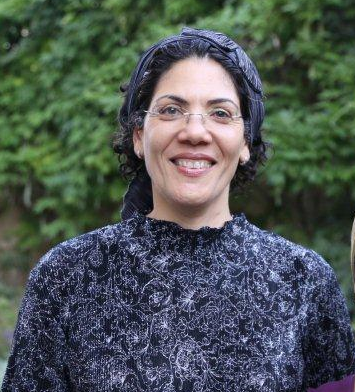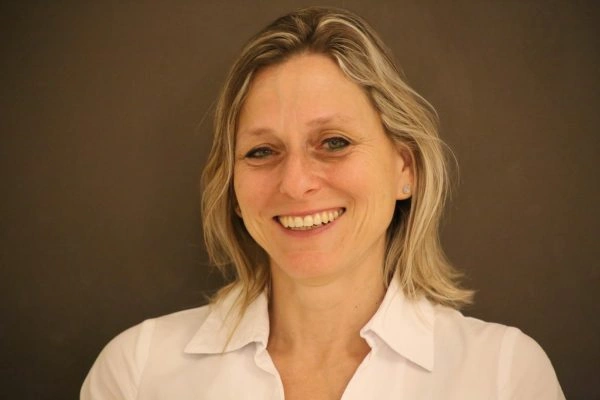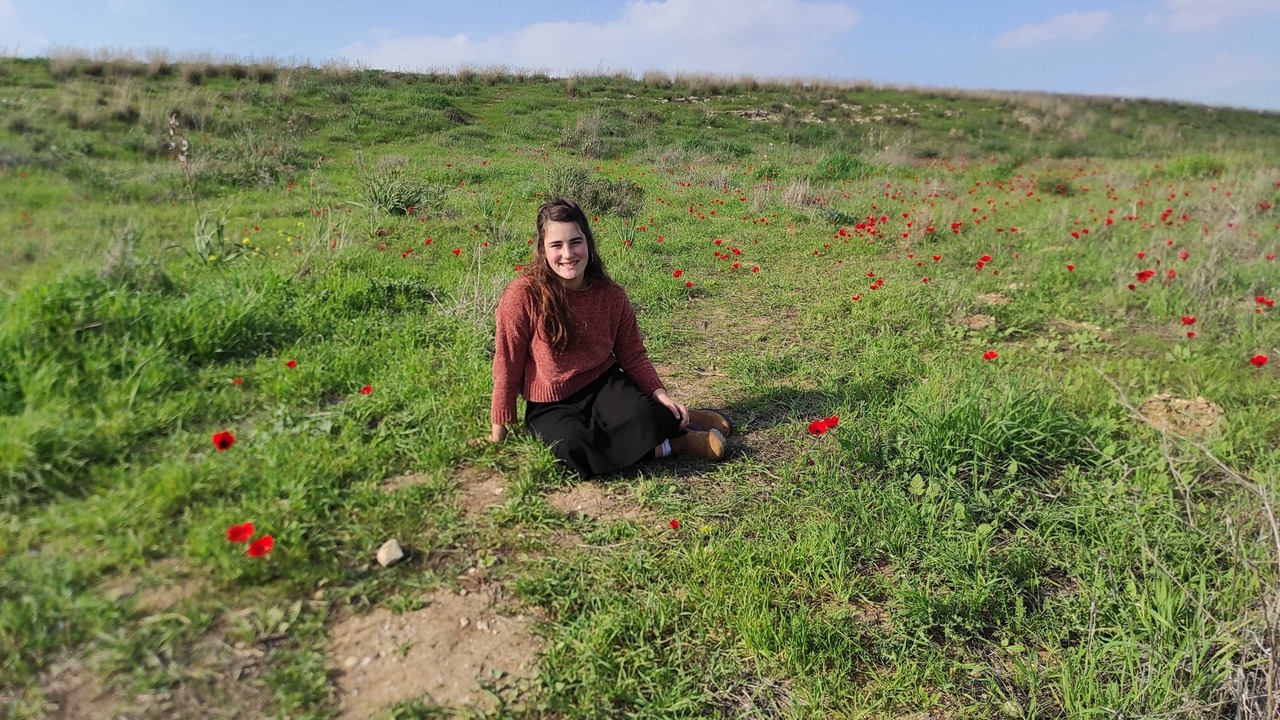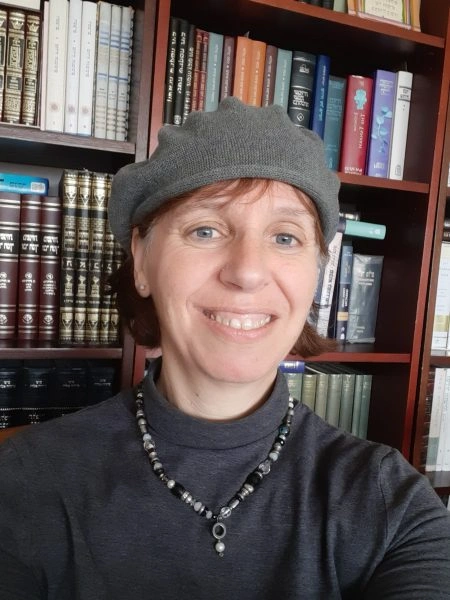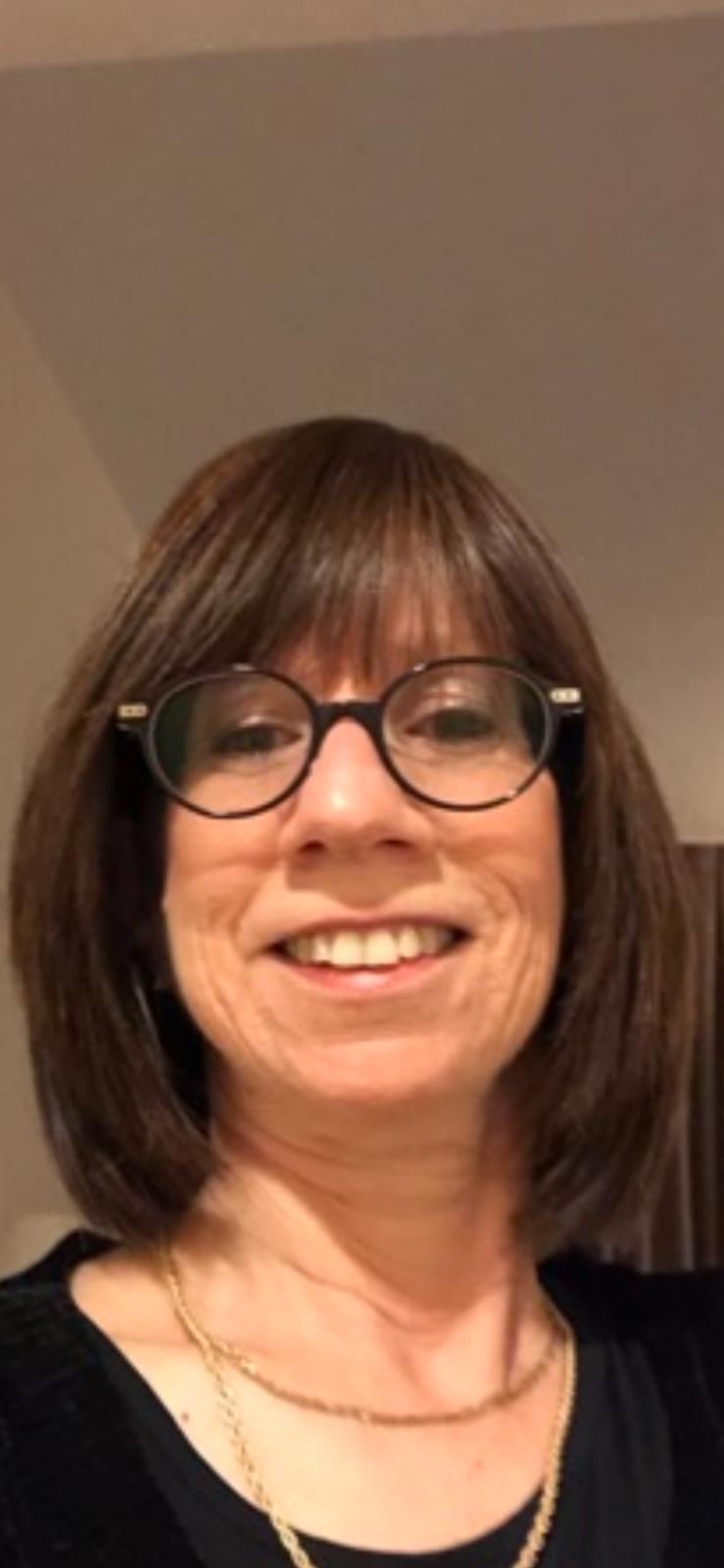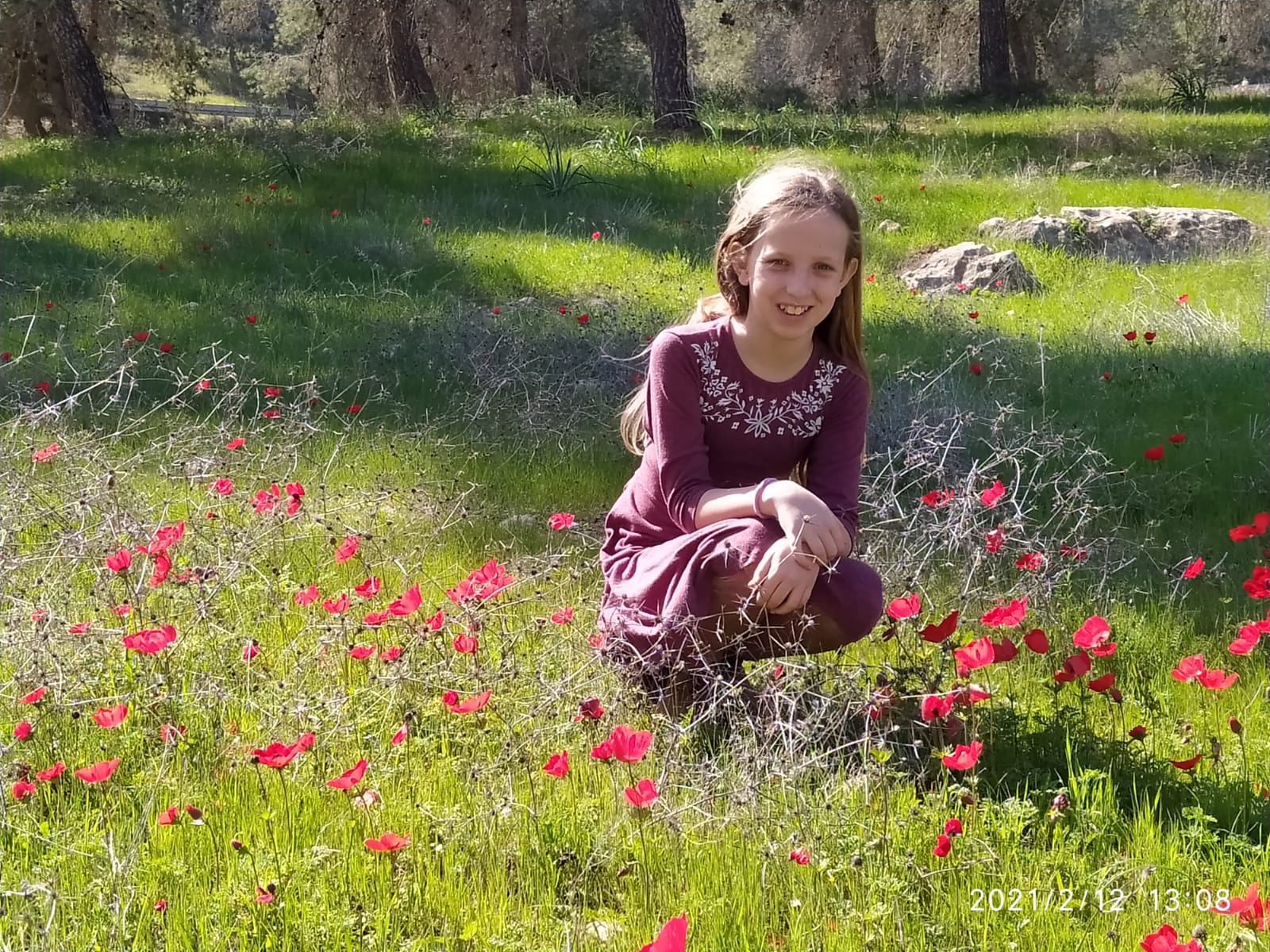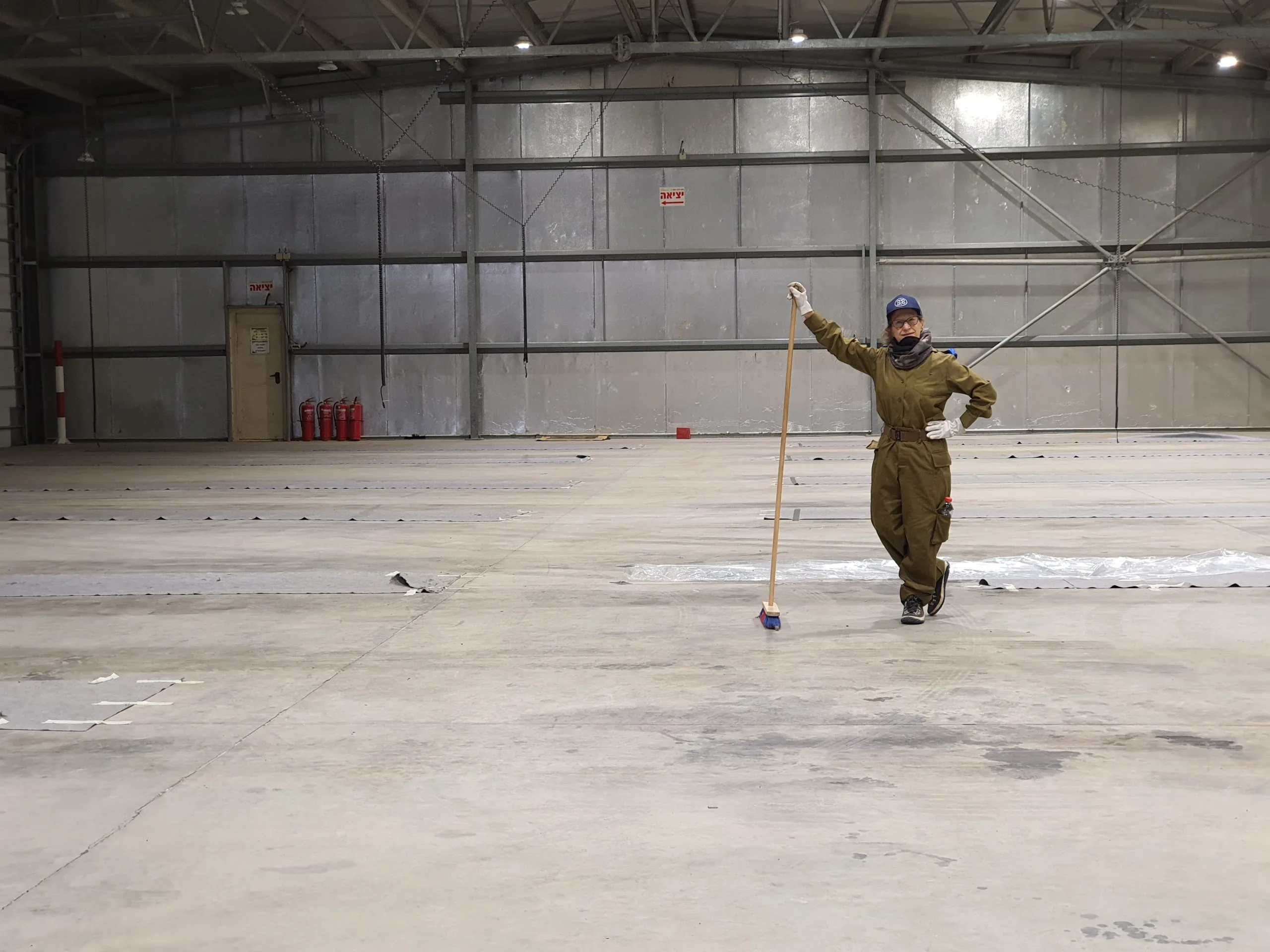יומא מה
שֶׁדּוֹמֶה לְפָז. זָהָב שָׁחוּט — שֶׁנִּטְוֶה כְּחוּט. זָהָב סָגוּר — בְּשָׁעָה שֶׁנִּפְתָּח כָּל הַחֲנוּיוֹת נִסְגָּרוֹת. זְהַב פַּרְוַיִם — שֶׁדּוֹמֶה לְדַם הַפָּרִים.
because it resembles the luster of pearls [paz] in the way it glistens. Shaḥut gold is named as such because it is very malleable and is spun like thread [shenitve keḥut]. Shaḥut is a contraction of the words shenitve keḥut. Closed gold is so called because when a shop opens to sell it, all the other shops close, as no one is interested in purchasing any other type of gold. Parvayim gold is so called because its redness resembles the blood of bulls [parim].
רַב אָשֵׁי אָמַר: חֲמִשָּׁה הֵן, וְכׇל חַד וְחַד אִית בֵּיהּ זָהָב וְזָהָב טוֹב. תַּנְיָא נָמֵי הָכִי: בְּכׇל יוֹם הָיָה זְהָבָהּ יָרוֹק, וְהַיּוֹם אָדוֹם — וְהַיְינוּ זְהַב פַּרְוַיִם שֶׁדּוֹמֶה לְדַם הַפָּרִים.
Rav Ashi said: There are in fact only five types of gold, the last five in Rav Ḥisda’s list. Gold and good gold are not independent categories; rather, each and every one of the types of gold has two varieties: Regular gold and a superior variety called good gold. That was also taught in a baraita with regard to parvayim gold: On every other day the coal pan was made of greenish gold, but on this day it was made of a red gold, and this is the parvayim gold which resembles the blood of bulls.
בְּכׇל יוֹם מַקְרִיב פְּרָס שַׁחֲרִית וְכוּ׳. בְּכׇל יוֹם הָיְתָה דַּקָּה, וְהַיּוֹם דַּקָּה מִן הַדַּקָּה. תָּנוּ רַבָּנַן: ״דַּקָּה״ מָה תַּלְמוּד לוֹמַר? וַהֲלֹא כְּבָר נֶאֱמַר: ״וְשָׁחַקְתָּ מִמֶּנָּה הָדֵק״! אֶלָּא, לְהָבִיא דַּקָּה מִן הַדַּקָּה.
§ The mishna states: On every other day, a priest sacrificed a peras, half of a maneh, of incense in the morning, and a peras in the afternoon, but on this day the High Priest adds an additional handful of incense and burns it in the Holy of Holies. On every other day, the incense was ground fine as prescribed by the Torah, but on this day it was superfine. The Sages taught in a baraita: The verse states with regard to the incense on Yom Kippur that it is “finely ground aromatic incense” (Leviticus 16:12). What does the verse mean to teach by this? Has it not already been stated: “And you shall grind some of it finely” (Exodus 30:36)? Rather, it teaches that on Yom Kippur the incense has to be superfine.
בְּכׇל יוֹם כֹּהֲנִים עוֹלִין בְּמִזְרָחוֹ שֶׁל כֶּבֶשׁ. דְּאָמַר מָר: כׇּל פִּינּוֹת שֶׁאַתָּה פּוֹנֶה לֹא יְהוּ אֶלָּא דֶּרֶךְ יָמִין לַמִּזְרָח.
§ The mishna states: On every other day, priests ascend on the eastern side of the ramp. A baraita explains the reason for this: As the Master said: All the turns that you turn should be only to the right, which, after ascending the altar, means one will turn to the east and will mean one will circulate the altar in a counter-clockwise fashion. When they descended, they again turned to the right, which is to the west of the ramp.
וְהַיּוֹם (עוֹלִין) בָּאֶמְצַע (וְיוֹרְדִין) בָּאֶמְצַע. מַאי טַעְמָא — מִשּׁוּם כְּבוֹדוֹ דְּכֹהֵן גָּדוֹל.
§ The mishna continues: But on this day the priests ascend in the middle of the ramp and descend in the middle. What is the reason? Due to the eminence of the High Priest he should not walk on the side but in the middle.
בְּכׇל יוֹם כֹּהֵן [גָּדוֹל] מְקַדֵּשׁ יָדָיו וְרַגְלָיו מִן הַכִּיּוֹר וְכוּ׳. מַאי טַעְמָא — מִשּׁוּם כְּבוֹדוֹ שֶׁל כֹּהֵן גָּדוֹל.
§ We learned in the mishna that every other day the High Priest sanctifies his hands and his feet from the laver like the other priests, and on this day he sanctifies them from the golden flask. What is the reason? Due to the eminence of the High Priest.
בְּכׇל יוֹם הָיוּ שָׁם אַרְבַּע מַעֲרָכוֹת. תָּנוּ רַבָּנַן: בְּכׇל יוֹם הָיוּ שְׁתַּיִם מַעֲרָכוֹת, וְהַיּוֹם שָׁלֹשׁ. אַחַת מַעֲרָכָה גְּדוֹלָה, וְאַחַת מַעֲרָכָה שְׁנִיָּה שֶׁל קְטוֹרֶת, וְאַחַת שֶׁמּוֹסִיפִין בּוֹ בַּיּוֹם, דִּבְרֵי רַבִּי יְהוּדָה.
§ The mishna states: On every other day, there were four arrangements of wood there, upon the altar, but on this day there were five. The Sages taught in the Tosefta: On every other day there were two arrangements of wood on the altar, but on this day there were three: One, the large arrangement; and one, the second arrangement for coals for the incense; and one, the additional arrangement of wood, which they add on that day for the incense that is burned in the Holy of Holies. This is the statement of Rabbi Yehuda.
רַבִּי יוֹסֵי אוֹמֵר: בְּכׇל יוֹם שָׁלֹשׁ, וְהַיּוֹם אַרְבַּע. אַחַת שֶׁל מַעֲרָכָה גְּדוֹלָה, וְאַחַת מַעֲרָכָה שְׁנִיָּה שֶׁל קְטוֹרֶת, וְאַחַת שֶׁל קִיּוּם הָאֵשׁ, וְאַחַת שֶׁמּוֹסִיפִין בּוֹ בַּיּוֹם.
Rabbi Yosei says: On every other day there were three arrangements, but on this day there were four: One, the large arrangement; and one, the second arrangement for the incense; and one, for the upkeep of the fire, so that if the fire of the large arrangement begins to die down, wood from this arrangement may be added to it to raise the flames; and one, the additional arrangement of wood that they add on that day for the incense that is burned in the Holy of Holies.
רַבִּי (מֵאִיר) אוֹמֵר: בְּכׇל יוֹם אַרְבַּע, וְהַיּוֹם חָמֵשׁ. אַחַת שֶׁל מַעֲרָכָה גְּדוֹלָה, וְאַחַת שֶׁל מַעֲרָכָה שְׁנִיָּה שֶׁל קְטוֹרֶת, וְאַחַת שֶׁל קִיּוּם הָאֵשׁ, וְאַחַת לְאֵיבָרִים וּפְדָרִים שֶׁלֹּא נִתְעַכְּלוּ מִבָּעֶרֶב, וְאַחַת שֶׁמּוֹסִיפִין בּוֹ בַּיּוֹם.
Rabbi Meir says: On every other day there were four arrangements of wood on the altar but on this day there were five: One, the large arrangement; and one, the second arrangement for the incense; and one, for the upkeep of the fire; and one, for burning the limbs and fats that were not fully consumed on the altar the previous evening; and one, the additional arrangement of wood that they add on that day for the incense that is burned in the Holy of Holies.
דְּכוּלֵּי עָלְמָא מִיהַת תַּרְתֵּי אִית לְהוּ, מְנָלַן? אָמַר קְרָא: ״הִיא הָעוֹלָה עַל מוֹקְדָה עַל הַמִּזְבֵּחַ כׇּל הַלַּיְלָה״ — זוֹ מַעֲרָכָה גְּדוֹלָה. ״וְאֵשׁ הַמִּזְבֵּחַ תּוּקַד בּוֹ״ — זוֹ מַעֲרָכָה שְׁנִיָּה שֶׁל קְטוֹרֶת. וְרַבִּי יוֹסֵי, קִיּוּם הָאֵשׁ מְנָא לֵיהּ? נָפְקָא לֵיהּ: מִ״וְּהָאֵשׁ עַל הַמִּזְבֵּחַ תּוּקַד בּוֹ״.
The Gemara analyzes the different opinions: At any rate, everyone has at least two arrangements in their calculations. From where do we derive this? The verse states: “It is the burnt-offering on the flame on the altar all night” (Leviticus 6:2); this is referring to the large arrangement. It states further: “And the fire of the altar shall be kept burning thereby” (Leviticus 6:2), this additional mention of a fire is referring to the second arrangement, which is for the incense. And from where does Rabbi Yosei learn about the additional arrangement for the upkeep of the fire? He derives it from the verse: “And the fire upon the altar shall be kept burning thereby” (Leviticus 6:5), which mentions fire for the third time.
וְרַבִּי יְהוּדָה: הָהוּא, לְהַצָּתַת אֲלִיתָא הוּא דַּאֲתָא. דְּתַנְיָא, הָיָה רַבִּי יְהוּדָה אוֹמֵר: מִנַּיִין לְהַצָּתַת אֲלִיתָא שֶׁלֹּא תְּהֵא אֶלָּא בְּרֹאשׁוֹ שֶׁל מִזְבֵּחַ? תַּלְמוּד לוֹמַר: ״וְהָאֵשׁ עַל הַמִּזְבֵּחַ תּוּקַד בּוֹ״. אָמַר רַבִּי יוֹסֵי: מִנַּיִין שֶׁעוֹשֶׂה מַעֲרָכָה לְקִיּוּם הָאֵשׁ? תַּלְמוּד לוֹמַר: ״וְהָאֵשׁ עַל הַמִּזְבֵּחַ תּוּקַד בּוֹ״.
And how does Rabbi Yehuda, who holds that normally there are only two arrangements, explain this third mention of a fire? That additional mention comes to teach about the kindling of the thin wood chips, which were used to ignite the fires on the altar, as it was taught in a baraita: Rabbi Yehuda would say: From where is it derived that the kindling of the wood chips should be done only at the top of the altar, rather than setting them alight at the bottom of the altar and carrying them up? The verse states: “And the fire upon the altar shall be kept burning thereby” (Leviticus 6:5), which indicates that the fire that is brought there has to be lit on the altar itself. Rabbi Yosei said: From where is it derived that an arrangement for the upkeep of the fire is made? The verse states: “And the fire upon the altar shall be kept burning thereby” (Leviticus 6:5).
וְרַבִּי יוֹסֵי, הַצָּתַת אֲלִיתָא מְנָא לֵיהּ? נָפְקָא לֵיהּ מֵהֵיכָא דְּנָפְקָא לֵיהּ לְרַבִּי שִׁמְעוֹן. דְּתַנְיָא: ״וְנָתְנוּ בְּנֵי אַהֲרֹן הַכֹּהֵן אֵשׁ עַל הַמִּזְבֵּחַ״ — לִימֵּד עַל הַצָּתַת אֲלִיתָא שֶׁלֹּא תְּהֵא אֶלָּא בְּכֹהֵן כָּשֵׁר וּבִכְלִי שָׁרֵת, דִּבְרֵי רַבִּי יְהוּדָה. אָמַר לוֹ רַבִּי שִׁמְעוֹן: וְכִי תַּעֲלֶה עַל דַּעְתְּךָ שֶׁזָּר קָרֵב לְגַבֵּי מִזְבֵּחַ? אֶלָּא, לִימֵּד עַל הַצָּתַת אֲלִיתָא שֶׁלֹּא תְּהֵא אֶלָּא בְּרֹאשׁוֹ שֶׁל מִזְבֵּחַ.
And from where does Rabbi Yosei derive that the kindling of the wood chips should be at the top of the altar? He derives it from the same place that Rabbi Shimon derives it. As it was taught in a baraita: The verse states: “And the sons of Aaron the priest shall put fire upon the altar” (Leviticus 1:7), which teaches about the kindling of the wood chips that it may be done only by a fit priest and one who is robed in the priestly vestments of service; this is the statement of Rabbi Yehuda. Rabbi Shimon said to him: There is no need for a verse to teach that a priest must kindle the chips, for could it enter your mind that a non-priest could approach the altar? Rather, this verse teaches about the kindling of the wood chips, that they may be lit only at the top of the altar.
וְרַבִּי יְהוּדָה? אִי מֵהָתָם, הֲוָה אָמֵינָא: קָאֵי אַאַרְעָא וְעָבֵיד בְּמַפּוּחָא, קָא מַשְׁמַע לַן.
And what would Rabbi Yehuda respond to Rabbi Shimon’s reasoning? If this halakha was derived from there, I would have said a non-priest could light the fire on the altar by standing on the ground below and using a bellows to fan the flames on the top of the altar. Therefore, this verse teaches us that in all circumstances the person kindling the fire must be a priest.
וְרַבִּי מֵאִיר, אֵיבָרִים וּפְדָרִים שֶׁלֹּא נִתְעַכְּלוּ מִבָּעֶרֶב, מְנָא לֵיהּ? נָפְקָא לֵיהּ: מִ״וְּאֵשׁ״. וְרַבָּנַן — וָאו לָא דָּרְשִׁי.
And from where does Rabbi Meir learn about an additional arrangement for the limbs and the fats that were not fully consumed on the altar the previous evening? He derives it from the phrase “and the fire.” The apparently superfluous word “and” alludes to the existence of an additional arrangement. And the Rabbis, i.e., Rabbi Yosei and Rabbi Yehuda, who disagree, do not expound the word “and.”
וְרַבָּנַן, אֵיבָרִים וּפְדָרִים שֶׁלֹּא נִתְעַכְּלוּ מִבָּעֶרֶב מַאי עָבֵיד לְהוּ? מַהְדַּר לְהוּ לְמַעֲרָכָה גְּדוֹלָה. דְּתַנְיָא: מִנַּיִין לְאֵיבָרִים וּפְדָרִים שֶׁלֹּא נִתְעַכְּלוּ מִבָּעֶרֶב
And according to the Rabbis, what do they do with the limbs and the fats that were not fully consumed on the altar the previous evening? Where are they burned? A priest returns them to the large arrangement, where the process of their burning is completed. As it was taught in a baraita: From where is it derived that for limbs and fats that were not fully consumed on the altar the previous evening,
שֶׁסּוֹדְרָן עַל גַּבֵּי מִזְבֵּחַ, וְאִם אֵין מַחֲזִיקָן, שֶׁסּוֹדְרָן עַל הַכֶּבֶשׁ אוֹ עַל גַּבֵּי סוֹבֵב, עַד שֶׁיַּעֲשֶׂה מַעֲרָכָה גְּדוֹלָה, וְסוֹדְרָן? תַּלְמוּד לוֹמַר: ״אֲשֶׁר תֹּאכַל הָאֵשׁ אֶת הָעוֹלָה עַל הַמִּזְבֵּחַ״.
that they are arranged upon the altar, and if the space on the altar cannot hold them, that they are arranged upon the ramp or upon the ledge that protrudes from the altar, until the large arrangement is made the following day and then they are arranged upon it? The verse states: “That which the fire will consume of the burnt-offering, on the altar” (Leviticus 6:3). This is taken to mean that those items that the fire already consumed are once again placed upon the altar.
וְרַבִּי מֵאִיר: עִיכּוּלֵי עוֹלָה אַתָּה מַחֲזִיר, וְאִי אַתָּה מַחֲזִיר עִיכּוּלֵי קְטוֹרֶת. דְּתָנֵי רַבִּי חֲנַנְיָא בַּר מִנְיוֹמֵי בִּדְבֵי רַבִּי אֱלִיעֶזֶר בֶּן יַעֲקֹב: ״אֲשֶׁר תֹּאכַל הָאֵשׁ אֶת הָעוֹלָה עַל הַמִּזְבֵּחַ״ — עִיכּוּלֵי עוֹלָה אַתָּה מַחֲזִיר, וְאִי אַתָּה מַחֲזִיר עִיכּוּלֵי קְטוֹרֶת.
And how does Rabbi Meir expound this verse? He derives from it that if parts of a burnt-offering that were already partially consumed on the altar fell off the altar, you should return them to continue burning; but you do not return incense that was consumed and fell off of the inner incense altar. As Rabbi Ḥananya bar Minyomi from the school of Rabbi Eliezer ben Ya’akov taught in a baraita: The verse states: “That which the fire will consume of the burnt-offering on the altar” (Leviticus 6:3). This teaches that if parts of a burnt-offering that were partially consumed fell off the altar, you should return them; but you do not return incense that was partially consumed and fell off the altar.
דְּכוּלֵּי עָלְמָא מִיהַת מוֹסִיפִין בּוֹ בַּיּוֹם אִית לְהוּ. מָנָא לְהוּ? נָפְקָא לְהוּ: מִ״וְּהָאֵשׁ״. וַאֲפִילּוּ לְמַאן דְּלָא דָּרֵישׁ וָאו, וָאו הֵא דָּרֵישׁ.
At any rate, everyone assumes there is an additional arrangement of wood that they add on that day, i.e., Yom Kippur, for the incense that is burned in the Holy of Holies. From where do they derive this? They derive it from the verse “And the fire upon the altar” (Leviticus 6:5). The apparently superfluous words “and the” allude to an additional fire. And even one who does not generally expound the word “and” does expound the phrase “and the.”
״אֵשׁ תָּמִיד״ לְמַאי אֲתָא? מִבְּעֵי לֵיהּ לְכִדְתַנְיָא: ״אֵשׁ תָּמִיד תּוּקַד עַל הַמִּזְבֵּחַ לֹא תִכְבֶּה״ — לִימֵּד עַל מַעֲרָכָה שְׁנִיָּה שֶׁל קְטוֹרֶת שֶׁלֹּא תְּהֵא אֶלָּא עַל הַמִּזְבֵּחַ הַחִיצוֹן.
The Gemara notes that there is an additional mention of the altar fire, which has not yet been explained: The phrase “a perpetual fire”(Leviticus 6:6), for what halakha does it come to teach? It is required for the halakha that was taught in the following baraita: The verse states: “A perpetual fire shall be kept burning on the altar, it shall not go out” (Leviticus 6:6). This teaches about the second arrangement of wood to produce coals for the incense, that it is set up only on the outer altar.
אֵשׁ מַחְתָּה וּמְנוֹרָה מִנַּיִין? וְדִין הוּא: נֶאֶמְרָה אֵשׁ בִּקְטוֹרֶת, וְנֶאֶמְרָה אֵשׁ בְּמַחְתָּה וּמְנוֹרָה — מָה לְהַלָּן עַל מִזְבֵּחַ הַחִיצוֹן, אַף כָּאן עַל הַמִּזְבֵּחַ הַחִיצוֹן.
From where is it derived that coals of fire that are taken with a coal pan for the incense on Yom Kippur and for the fire for lighting the candelabrum must also be from the outer altar? It is a logical derivation. “Fire” is stated with regard to the daily incense offering, and “fire” is stated with regard to the incense coal pan and the candelabrum. Just as there, in the case of the daily incense offering, the fire is taken from upon the outer altar, so too here, in the case of the incense coal pan and the candelabrum, the fire should be taken from upon the outer altar.
אוֹ כְּלָךְ לְדֶרֶךְ זוֹ: נֶאֶמְרָה אֵשׁ בִּקְטוֹרֶת, וְנֶאֶמְרָה אֵשׁ בְּמַחְתָּה וּמְנוֹרָה — מָה לְהַלָּן בְּסָמוּךְ לוֹ, אַף מַחְתָּה וּמְנוֹרָה בְּסָמוּךְ לוֹ.
If the matter is derived through reasoning, it is also possible to posit an alternative argument: Or, alternatively, one could go this way. “Fire” is stated with regard to the daily incense offering, and “fire” is stated with regard to the incense coal pan and the candelabrum. Just as there, in the case of the daily incense offering, the fire is taken from a place near to it, i.e., the outer altar, so too, in the case of the incense coal pan and the candelabrum, the fire should be taken from a place near to it, i.e., the inner altar.
תַּלְמוּד לוֹמַר: ״אֵשׁ תָּמִיד תּוּקַד עַל הַמִּזְבֵּחַ לֹא תִכְבֶּה״ — אֵשׁ תָּמִיד שֶׁאָמַרְתִּי לָךְ, לֹא תְּהֵא אֶלָּא בְּרֹאשׁוֹ שֶׁל מִזְבֵּחַ הַחִיצוֹן.
Since there are two equally logical derivations, a verse is required to teach the halakha. The verse states: “A perpetual fire shall be kept burning on the altar, it shall not go out” (Leviticus 6:6). The “perpetual fire” that I told you, i.e., the fire of the candelabrum, about which the Torah states “a lamp to burn continually” (Exodus 27:20), should be lit only from a fire that is upon the top of the outer altar.
לָמַדְנוּ אֵשׁ לַמְּנוֹרָה, אֵשׁ לַמַּחְתָּה מִנַּיִין? וְדִין הוּא: נֶאֶמְרָה אֵשׁ בְּמַחְתָּה, וְנֶאֶמְרָה אֵשׁ בִּמְנוֹרָה — מָה לְהַלָּן עַל גַּבֵּי מִזְבֵּחַ הַחִיצוֹן, אַף כָּאן עַל מִזְבֵּחַ הַחִיצוֹן.
We have therefore learned the source for the fire for the candelabrum. From where do we derive the same halakha for the fire for the incense coal pan on Yom Kippur? It is a logical derivation. “Fire” is stated with regard to the incense coal pan on Yom Kippur, and “fire” is stated with regard to the candelabrum. Just as there, in the case of the candelabrum, the fire is taken from upon the outer altar, so too, here, in the case of the incense coal pan, the fire should be taken from upon the outer altar.
אוֹ כְּלָךְ לְדֶרֶךְ זוֹ: נֶאֶמְרָה אֵשׁ בִּקְטוֹרֶת, וְנֶאֶמְרָה אֵשׁ בְּמַחְתָּה — מָה לְהַלָּן בְּסָמוּךְ לוֹ, אַף כָּאן בְּסָמוּךְ לוֹ!
If the matter is derived through reasoning, it is also possible to posit an alternative argument: Or, alternatively, one could go this way: “Fire” is stated with regard to the daily incense offering, and “fire” is stated with regard to the incense coal pan on Yom Kippur. Just as there, in the case of the daily incense offering, the fire is taken from a place near to it, i.e., the outer altar, so too, here, in the case of fire for the incense coal pan, the fire should be taken from a place near to it, i.e., the inner altar.
תַּלְמוּד לוֹמַר: ״וְלָקַח מְלֹא הַמַּחְתָּה גַּחֲלֵי אֵשׁ מֵעַל הַמִּזְבֵּחַ מִלִּפְנֵי ה׳״, אֵיזֶהוּ מִזְבֵּחַ שֶׁמִּקְצָתוֹ לִפְנֵי ה׳ וְאֵין כּוּלּוֹ לִפְנֵי ה׳ — הֱוֵי אוֹמֵר זֶה מִזְבֵּחַ הַחִיצוֹן.
Since there are two equally logical derivations, a verse is required to teach the halakha: The verse states: “And he shall take a pan full of coals of fire from upon the altar from before the Lord” (Leviticus 16:12). The description of the altar being “from before the Lord” suggests it is not entirely before the Lord. Which altar is only partially before the Lord, but not all of it is before the Lord, i.e., part of it lies directly parallel to the Sanctuary, but part of it does not? You must say that this is the outer altar. Only the western side of it lies parallel to the entrance to the Sanctuary. In contrast, the inner altar is entirely within the Sanctuary and so is considered entirely before the Lord.
וְאִיצְטְרִיךְ לְמִיכְתַּב: ״מֵעַל הַמִּזְבֵּחַ״, וְאִיצְטְרִיךְ לְמִיכְתַּב: ״מִלִּפְנֵי ה׳״, דְּאִי כְּתַב רַחֲמָנָא ״מֵעַל הַמִּזְבֵּחַ״, הֲוָה אָמֵינָא: מַאי ״מִזְבֵּחַ״ — מִזְבֵּחַ פְּנִימִי, כְּתַב רַחֲמָנָא: ״מִלִּפְנֵי ה׳״. וְאִי כְּתַב רַחֲמָנָא: ״מִלִּפְנֵי ה׳״, הֲוָה אָמֵינָא דַּוְקָא מִלִּפְנֵי ה׳,
And it is necessary to write “from upon the altar” and it is necessary to write “from before God” because if the Merciful One had written only “from upon the altar” I would have said: What altar is the verse referring to? The inner altar. Therefore, the Merciful One writes “from before God.” And if the Merciful One had written only “from before God,” I would have said it means specifically from the part of the altar that lies before God, i.e., from the northwestern corner, which lies directly parallel to the entrance of the Sanctuary;

